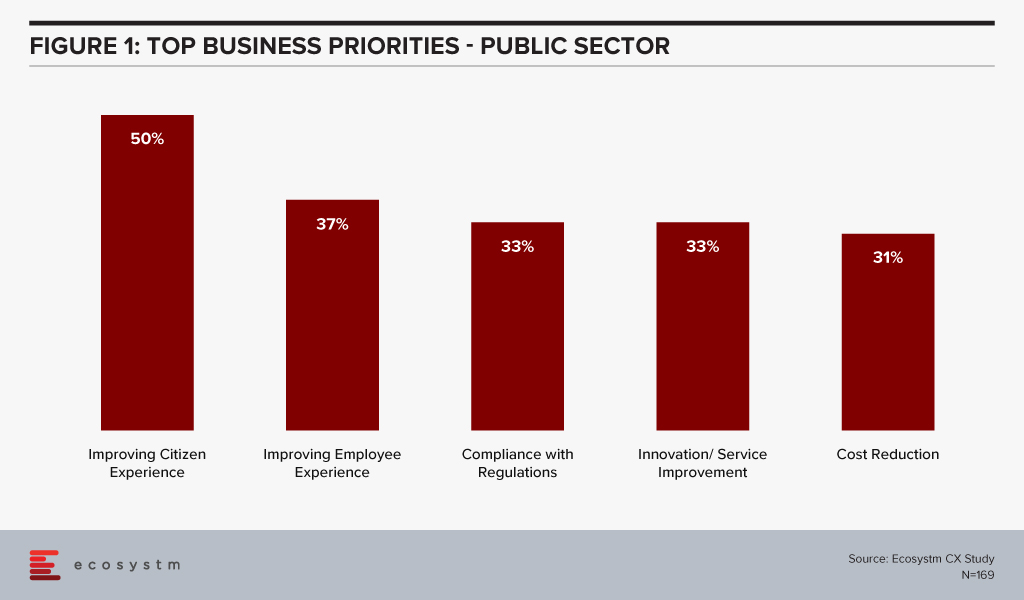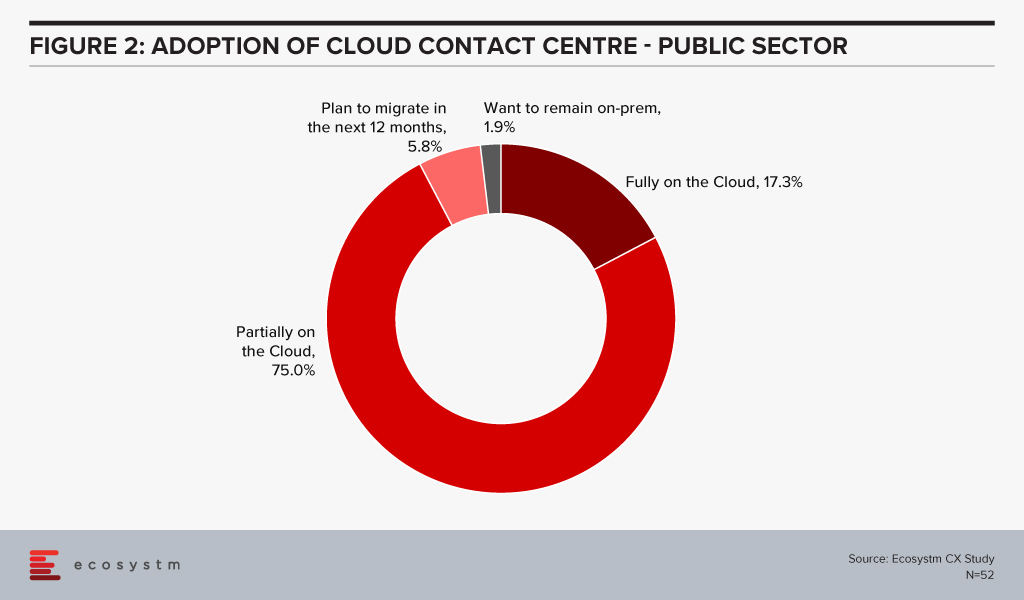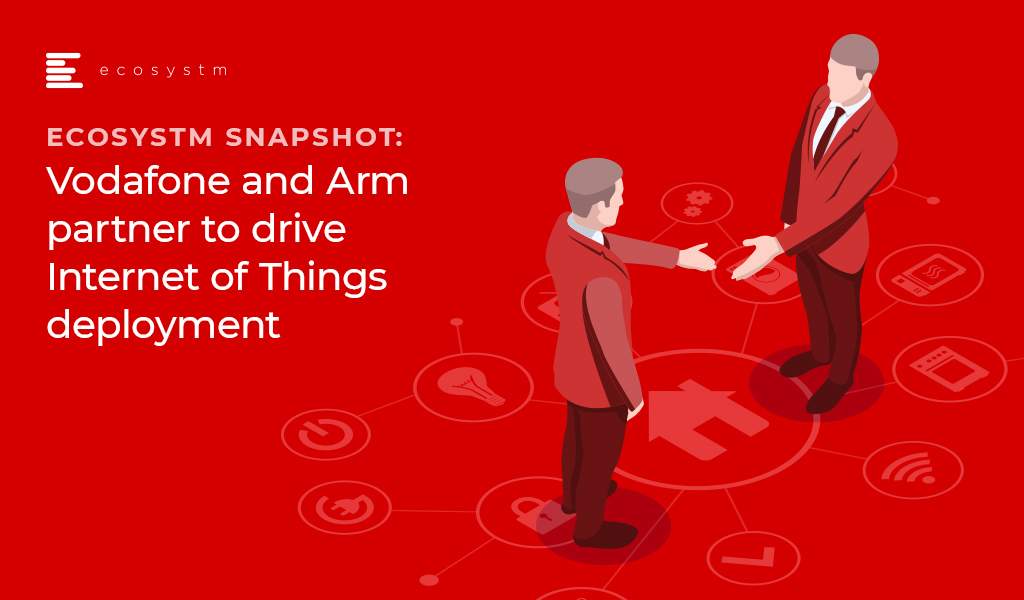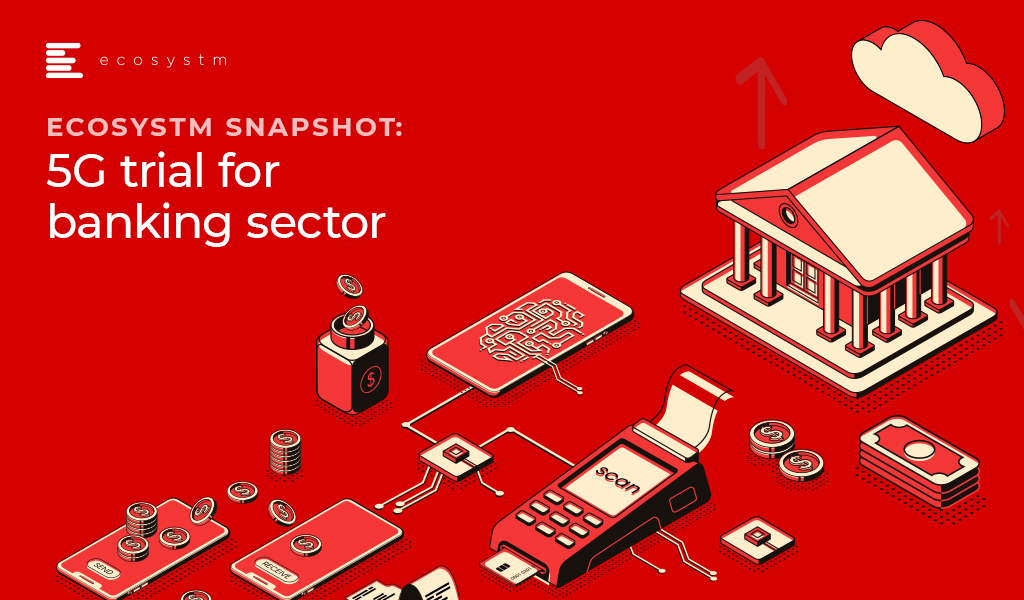Last week saw 8×8 and Verint announce a partnership that aims to deliver integrated cloud-based contact centre services and workforce management applications to medium and large enterprises worldwide. The integrated solution will leverage 8×8’s expertise in unified communications as a service (UCaaS) and contact centre as a service (CCaaS) with Verint’s workforce management solutions.
The Need for Better Workforce Optimisation Solutions
Talking about the need for integrated solutions such as this in the Contact Centre space, Ecosystm Principal Advisor for Enterprise Communications and Contact Centres, Audrey William, says, “With agents working from both their homes and the office, contact centres will be challenged with managing staffing requirements and scheduling. The key to delivering exceptional customer experience will be to have the right agent working on the right assignments, across the right channels. On top of that, contact centres have to manage shifts, flexible work hours and part-time agents working across multiple locations. This does not make workforce optmisation an easy task!”
“Driving better employee experience is a top priority for contact centres – and this will include investments in solutions that can alleviate stress for the agent. The industry continues to be challenged by agent attrition – the most common causes being work overload and stress. To provide a consistently good customer experience, contact centres have to listen better to their agents, understand their workloads better, show empathy, and monitor their emotional well-being A workforce optimisation solution will ensure that inbound enquiries are not impacted, and agents’ times are better utilised, through forecasting and better scheduling.”

Synergy between 8×8 and Verint
The single-vendor integrated communications and contact centre solution is anticipated to create better customer engagement and smoother remote operations by empowering employees and agents to plan, forecast and schedule contact centre activities and manage workloads through omnichannel routing.
William says, “8×8 has been establishing its presence in the unified communications and contact centre solutions space in Asia Pacific, particularly in small and medium enterprises (SMEs). Partnering with a market leader in workforce management such as Verint is a positive step. Verint’s strengths in gap analysis from historical data patterns and predicting will help 8×8’s customers to drive optimisation and accuracy in planning in the contact centre. This will have an impact on reducing overstaffing and overtime. Additionally, it will give agents greater control over their schedules and the flexibility to plan their shifts around their desired hours of work.”
“While 8×8 has its own workforce engagement solution, this partnership demonstrates how 8×8 is elevating its game and wants to offer its customers a more robust workforce management solution through Verint Monet and Verint Enterprise. This solution is also out of the box for 8×8’s customers without the need for professional services. That is a plus!”, says William.

Contact centres across industries are being challenged by the current crisis because of the high volume of inbound interactions – through voice and non-voice channels. This has been further compounded by the need to move most of their customer care agents to their homes, especially in countries that have implemented strict social distancing and lockdown measures. This is particularly challenging for the public sector because they are having to respond to an influx of citizen queries regarding COVID-19 specifically (including test centres and availability) and other related areas (information on trade and travel, economic stimulus and so on).
Public Sector Focus on Citizen Experience
Ecosystm research reveals that public sector organisations are hugely focused on citizen experience (Figure 1). But other priorities include employee experience and innovation in their service provision.
Being able to provide better and innovative service to citizens in a compliant manner is key for every public sector organisation. This has led to governments driving the uptake of cloud solutions, such as the New Zealand Government’s directive to public sector organisations that public cloud services are preferred over traditional IT systems, in order to enhance citizen experiences, streamline operations and create new delivery models. In 2018, the Singapore Government had announced the intention to use commercial cloud services in the public sector. This was fueled as much by the need to overhaul ageing infrastructure, as it was to provide exceptional citizen experience.
Public Sector Adopting Cloud Contact Centres
While the private sector is often quicker in their adoption of digital technologies for better customer experience (CX), the adoption in the public sector can be challenging due to various concerns such as legacy systems, privacy, national security, inter-departmental dependency and more. Ecosystm Principal Advisor, Audrey William says, “Most cloud contact centre solution providers today have the highest level of security wraps and certifications including country-level certifications. However, verticals such as Government, have remained concerned about security. This has not allowed them to innovate as fast as some of the other sectors on leveraging some of the best-in-class customer experience technologies.”
In the US, MAXIMUS, a government services provider company and Genesys recently announced a partnership to set up the MAXIMUS Genesys Engagement Platform, an integrated, cloud-based omnichannel contact centre solution. This was driven by the government requirement for public sector organisations to provide seamless customer experiences similar to those offered in the private sector. The platform is certified by the Federal Risk and Authorization Management Program (FedRAMP). FedRAMP promotes the adoption of secure cloud services across the US Federal Government, in partnership with federal agencies, cloud service providers and 3rd party assessment organisations and provides the standards for security and risk assessment.
This is in line with what we see in the Ecosystm data. Government agencies that use contact centres are increasingly evaluating cloud options, with 17% saying that they operate fully on the cloud (Figure 2). While this may be difficult for all public sector organisations, with mandates around data location and security, a majority are partially on the cloud.
There are several benefits to using the cloud model including the ability to make changes and scale up/down without much customisation or professional services (which can come in handy for a quick re-alignment of the workforce) and manage seasonal spikes. Additionally, cloud solutions allow almost instantaneous access to new features and easy testing of proofs of concept. Public sector organisations are fast realising the value of cloud contact centres.
William sees the FedRAMP certification having immense potential. “FedRamp provides a secured environment for any service that is rolled out as this involves multiple levels of security. Citizens expect a more personalised service through chat, Twitter, mobile, social messaging channels like WhatsApp and many more. However, they also want to feel safe when providing personal information and want to know that the platform that holds their data is secure. When they know that security is at the highest level, they will be more open to providing personal data.”
Managing an Omnichannel Experience
Over half of public sector organisations in the Ecosystm CX study mentioned that they are driving an omnichannel experience for their customers. This has become especially relevant today, as organisations have the need to reduce the call volumes for their contact centres – through non-voice services and customer self-service. The MAXIMUS Genesys Engagement Platform will leverage Genesys Engage, which provides integrated features and functionalities across multiple channels through a single voice and digital user interface. Solutions such as these provide the ability to integrate calls, emails, chats, messages and social comments into one connected platform.
William says, “The cloud platform can help with the highest level of efficiency, scale and speed by integrating multiple channels on a single platform, for more connected customer experience. Government departments will look to leverage capabilities such as Conversational AI, in-app mobile messaging, SMS, email and voice calls within a multi secure environment. Citizens have high expectations from government departments – they expect fast, reliable and efficient service and automation. It would be difficult for governments to provide that level of service without leveraging cloud contact centre technology. That is the only way to move away from inefficient traditional architectures.”
Speaking about the adoption of cloud contact centres in the Asia Pacific region, William says, “Despite initiatives like Australia’s Digital Transformation Agency, the adoption has been relatively low in the public sector. But that has been changing fast with the COVID-19 situation forcing some government departments to move almost immediately to the cloud allowing easier changes to call workflows and other dynamic services that may have to be addressed on a daily basis.”

At the end of last year, Ecosystm published The Top 5 IoT Trends for 2020. Principal advisors, Kaushik Ghatak and Francisco Maroto predicted that in 2020 5G providers will be forced to operate outside their comfort zone. While the impact on network and communications equipment providers will be immense, 5G will also force telecom providers to re-think their existing business models. They may not be the best equipped to take 5G technology to market, they way the operate now.
Traditionally telecom providers have been focused on horizontal technologies and on connecting people. They have not had to have conversations around connecting machines – where every industry has their own unique use cases. This verticalisation, will force telecom providers to deal with newer stakeholders in their client organisations – not just IT infrastructure and Facilities. Several telecom providers have in the past become public cloud providers, as their markets becomes smaller and they face competition from global cloud storage providers. Now, telecom providers will increasingly look to partner with cloud providers and systems integrators with relevant industry experience, to translate the value proposition of what they are offering. “Strategic partnerships between leading technology and telecom operators are taking place especially in building various 5G use cases and applications centred on the cloud computing platform,” says Shamir Amanullah, Principal Advisor Ecosystm.
Maxis Strengthening their Market Position in Malaysia
The recently announced partnership between Maxis and Microsoft is an example of how these partnerships will pan out. Maxis does not want to be viewed only as a telecom provider and wants to be the leading Malaysia-based solutions provider. As telecom providers also start to tap the enterprise market, cloud and IoT will be key technology areas, that they should focus on.
“Maxis is leading the way as a converged solutions provider in Malaysia and following the appointment of Gökhan Ogut as the CEO in 2019, there has been a focus to grow the enterprise business which promises a lucrative opportunity,” says Amanullah.
“While the mobile connectivity market is effectively about customer retention in a saturated market, new opportunities lie in enterprise needs for fixed connectivity, managed services, cloud and IoT which is largely untapped. The expected deployment of the 5G network will spur new applications, business models and partnerships.”
Maxis’ move appears to be well-thought. Amanullah thinks that the strategic partnership with Microsoft will help Maxis accelerate its enterprise solutions offering combined IoT and 5G capabilities with Microsoft’s Azure IoT technology. It will also allow for hybrid environments, which is important given the rise of hybrid and multi-cloud adoption. Ecosystm research shows that hybrid cloud adoption in Malaysia is at a nascent 7%. But if they take a lesson from their neighbour, the rise in adoption will be steep. Our research finds that hybrid cloud adoption in Singapore is around 42%.
Telecom providers are also focusing on Digital Transformation (DX). In the Top 5 Telecommunications & Mobility Trends for 2020, Liam Gunson, Director Ecosystm says, “In 2020, operators will focus on transforming the core – remove unnecessary costs, improve customer experience, capture new opportunities – and on building telecom networks with scalability, flexibility, efficiency and agility.” Microsoft’s enterprise Modern Workplace solutions including Microsoft Teams will aid Maxis’ own DX efforts. Maxis will offer fixed line voice calls with the unified communications service.
Mutually Beneficial Partnership
Amanullah also sees this as a positive move for Microsoft. “Microsoft is poised to lead efforts in 5G network deployment which promises to enhance capabilities and drive new economic growth, especially with the focus on Industry 4.0. Maxis’ position as a leading enterprise communications provider and Microsoft’s enterprise technology experience and offerings promises a mutually beneficial partnership.”
Ecosystm research finds that Microsoft is the leading cloud provider in Malaysia when it comes to brand perception, and about a third of enterprise cloud deployments use Microsoft. Amanullah thinks that, “Microsoft’s leading position in cloud platforms is an attractive proposition for enterprises that are looking at speed, performance, reliability, global scale, security and lower costs.”
Talking about the 5G applications that the Malaysia market will see, Amanullah sees tremendous business opportunities in areas such as smart city, autonomous driving, smart traffic management, virtual reality (VR), augmented reality (AR), cloud gaming, and healthcare, to name a few.
Vodafone and Arm announced a strategic agreement at MWC19 to work on simplifying IoT services and reduce the costs confronted by the organisations on the implementation of IoT.
The Vodafone-Arm agreement expands on the previous collaboration which was on integrated SIM (iSIM) technology, a system on chip(SOC) design which can be reprogrammed with respect to the requirements. The iSIM allows customers to remotely provision and manage IoT devices across the globe which proposes reduced complexities and offers significant cost reduction.
To carry on the existing relationships this agreement is expected to bring Vodafone’s IoT global platform and Arm’s IoT software services to offer organisations a world of connected systems. This characterises a major initiative enabling a wide ecosystem of manufacturers to tap into the potential of trillions of connected devices.
Speaking on the subject, Ecosystm’s Executive Analyst, Vernon Turner thinks that “this announcement will help customers who look to and need a cellular-based IoT solution. Traditionally, mobile devices require a physical process to change their SIM (Subscriber Identity Module) card when there is a change of ownership or carrier, but in a world of trillions of connected devices, this is just not practical.”
Arm’s announcement of its iSIM is the latest in a series of announcements to resolve the size, cost, and scalability of SIM cards. SIM cards are critical for secure identity so the challenge has been to create a cost-effective IoT System On Chip (SOC) that has the SIM function embedded on it. Through its Kigen product family, Arm’s tech buyers will be able to build solutions on the latest cellular standards and specification suitable to run on 5G and backward compatible networks.
Vodafone’s customers will now be able to create a cellular-based IoT solution that can be continuously connected and deployed globally, giving them better investment protection and reduced operational costs. In addition, customers will have the choice of managing these devices through a ‘single pane of glass’ on either Vodafone’s IoT platform or Arm’s Pelion IoT Platform.
“Any time complexity is removed from an IT or mobile solution, customers respond by deploying and using that solution more” says Vernon. “ SoC-based solutions tend to have more functionality that allows for innovation, so we should expect to see an uptick in cellular-based IoT deployments”
Commonwealth Bank of Australia (CBA) has entered into a partnership kicking off trials of 5G and edge computing with telecommunication majors Telstra and Ericsson to explore the benefits of 5G in the banking sector.
The partnership agreement was signed at the annual Mobile World Congress (MWC) 2019, in Barcelona. The trials are projected to showcase what banking in the future might look like, and how 5G technology and edge computing can help to lower the requirements of the infrastructure presently required for banking operations.
Speaking on the subject, Ecosystm’s, Principal Advisor, Tim Sheedy, thinks that “this trial will help all parties better understand where the opportunities are for users of the mobile networks, and for the telco and equipment providers too. They will understand the potential demand for specific network slices and capabilities and get a better idea of what they need to deliver and whether or not there may be demand for these services”.
5G edge computing is still in nascent stages and there’s not much present in the market. Whether it minimises infrastructure or distributes it differently is yet to be seen. “The trials will likely determine what the shape of the new distributed architecture looks like (how close to the “edge” do the data centres need to be?)” says Tim, “There are unknowns of 5G at the moment – so the trials are invaluable to all parties to help them know where and what they need to invest in to make 5G services commercially viable.”
For a layman, 5G edge computing is all about delivering the reliability, speed, and latency that they need – or more likely – a sensor needs in order to get its job done. Once the technology becomes mainstream the end-users/banking customers will reap benefits from it. “5G is not just about delivering faster speed but it is about delivering them intelligently”, says Tim, “5G will help Telco’s to prioritise traffic AND network services – meaning that the end user can achieve their goals.”
While it’s too early to tell at this stage how will 5G benefit the banking sector, it should help banks offer their customers more reliable and relevant services – but what services need to be distributed at what times, and what can remain at the core are not yet understood.






